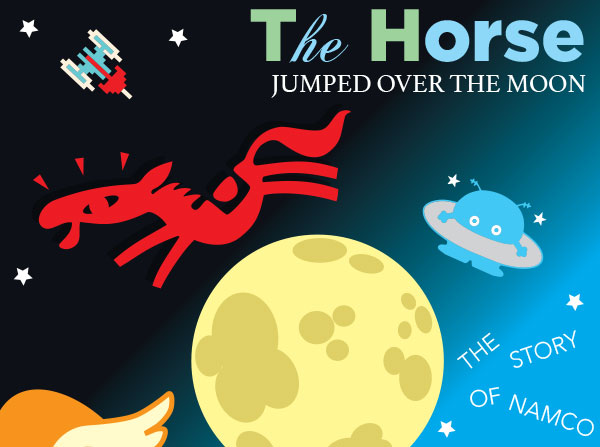
When I started this series I didn’t know that I would end up writing about Wonder Eggs. In all honesty last year I had an idea for a blog. I simply wanted to talk about some of my favorite game art. I planned on deconstructing, and talking about the aesthetic used in two rare arcade games. These were Namco’s Prop Cycle, and Sega’s the Ocean Hunter.
I already did a deep dive on Prop Cycle. This was an arcade game where you rode a flying bicycle. You actually had to sit on a mock up of the bike, and pedal the cranks in order to control your speed. I had also called
the Ocean Hunter one of my favorite games of all time. In it you traveled the globe hunting gigantic sea creatures using a harpoon machine gun.

Each of these games had a brilliant art style. A surface level comparison might be
steampunk. As the technology seemed to rely on analog power, and analog interfaces. There were brass, polished wood, and metal vehicles that looked somewhere from the late 1800’s - early 1900’s. That was not an accurate way to describe the aesthetic. The fashion, costumes, and architecture featured in both the Sega, and Namco games were not Victorian but something original. There were no top hats covered with gears, and goggles. No long flowing dresses, or other costume accessories that might be associated with the steampunk movement. I would better classify the world featured in the Namco game as a precursor to the
Hopepunk / Solarpunk / Ecopunk movement. Although the technology seemed simplistic, it was actually set in the far future, where man, and nature existed in harmony.
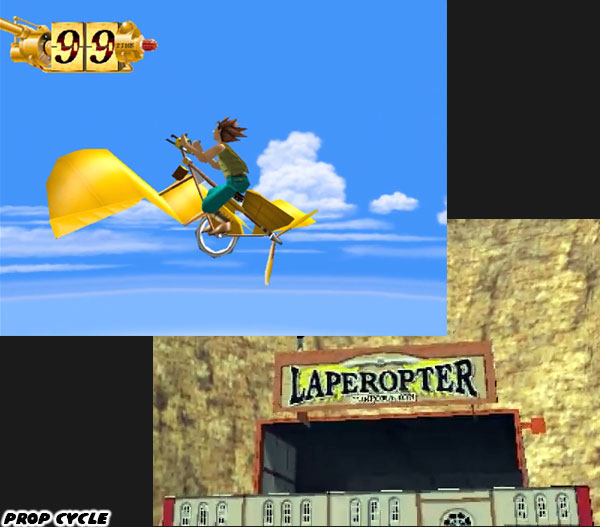
As I was doing my research on the games in Japanese, especially on Prop Cycle, I kept finding cross information between the game, something called Wonder Eggs, and a place known as Laperot. The reason why was because the name of the flying bike in Prop Cycle was called the Laperopter. There was a ride with the same name in Wonder Eggs. This lead to information on Shigeki Toyama. I would discover that Mr. Toyama was responsible for
a majority of the U.G.S.F. science fiction designs. These were by far my favorite space ships, and canon of all sci-fi universes. He was absolutely brilliant with his space ship art, but Prop Cycle allowed him to create something completely different. This was a game, and a place that fit somewhere in between the retro futuristic technology that Jules Verne wrote about, and the cozy cottage-core of Hayao Miyazaki’s animated masterpieces. There was no doubt that his nickname as
the Leonardo DaVinci of Namco was well earned.
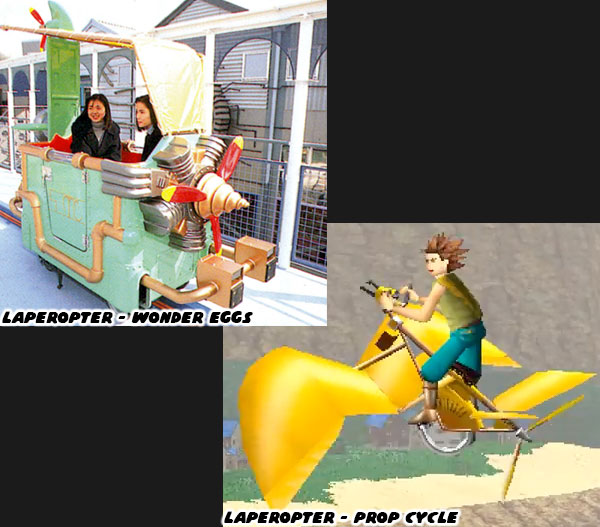
Mr. Toyama’s amusement masterpiece was
Galaxian³ which was already a featured attraction at Expo ’90, and Wonder Eggs. He was tasked with designing two other attractions for Wonder Eggs. One of which was the Laperopter ride, and a shooting game called Phantomers. The Laperopter was a
People Mover-type attraction which took guests around the perimeter of the park. Here was the description from a Namco Graffiti preview of the park. “The “Laperopter“ allows you to take in the view of the park while circling the sky above Elds Square.You can also view the Imagination Gallery, which is decorated with mysterious paintings such as “The Trump Banquet.“ If you ride with two or more people, you will receive an automatically taken snapshot. Now, let's aim for a two-shot with that girl you're interested in!!”
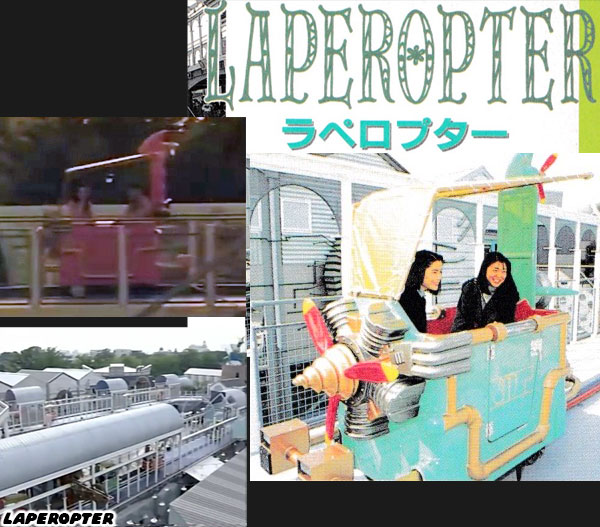
This ride was simple. It would go over well with visitors of every age. To help put the finance people at ease it would also be using technology that Namco already owned. In many of their rooftop amusement parks, and indoor amusement centers Namco had similar train rides, and monorail rides. The Laperopter would be a two passenger carriage which would feature a new fiberglass frame. It had a wing, tail, and propeller at the front designed by Mr. Toyama. In classic Namco fashion he would be putting in details, and story elements that were interrelated. Namco titles were tied together sometimes directly, and sometimes very loosely. The third attraction that Mr. Toyama oversaw was one of those direct callouts. Phantomers was a light gun attraction where guests could target invisible demons that popped out of their secret base. You could only see the ghosts if you looked through something called the Phantom Scope. The technology used in this attraction was similar to the
Golly! Ghost! arcade game that the studio released in 1990. It featured physical props, and video projection with a peppers ghost effect.
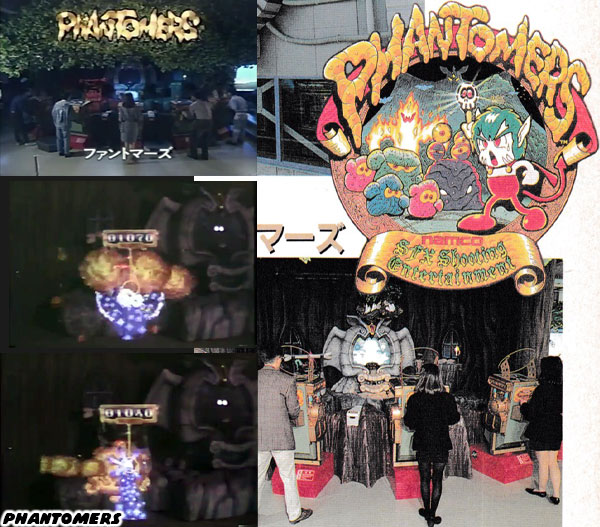
I would liken this attraction to Walt Disney’s Enchanted Tiki Room. Except that guests had light gun turrets which could shoot at the tiki gods that appeared during the show. Here was the official description from Namco; “The “Phantom Scope“ was invented by Dr. Eiji Potts. When you use this...it's strange.
Phantoms, small devils that are supposed to be invisible to the naked eye, will appear using the Phantom Scope. Shoot the “Bilibili Ray“ at the diorama on the stage and defeat the phantoms! The diorama moves and the phantoms begin to dance to the rhythm of fun music. SFX shooting “Phantomers“. There are lots of fun tricks and performances!”
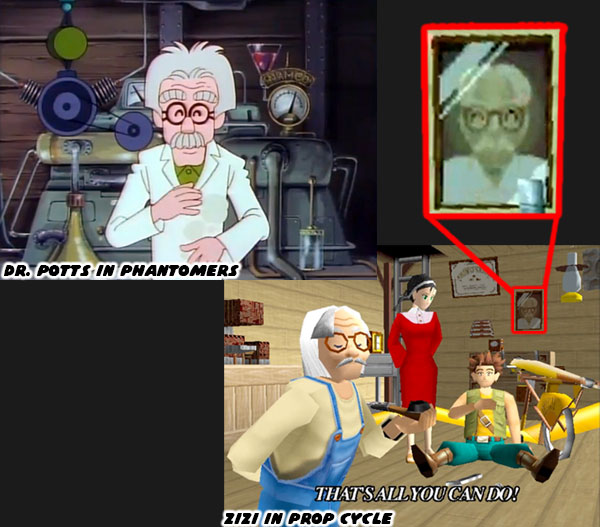
A picture of Dr. Eiji Potts appeared on the workshop wall of Zizi Potts, the mechanic from Prop Cycle. According to the official canon from Namco, and Mr. Toyama’s design notes Dr. Eiji not only created the Bilibili Ray which could be used on evil spirits, he also invented the original Laperopter featured in Laperot village. This vehicle could work on land, sea, and air. Zizi changed the name of his business from the Potts Invention Workshop to the Laperopter Company. He had also founded the Laperot Lobster Company. That’s right! Laperot from Wonder Eggs was immortalized in Namco’s official game canon! This was a fun detail, however the roots of everything that Mr. Toyama did for the park was because of his grandfather. In his design notes he stated that Dr. Potts was based on Tokio. Tokio designed the “Flying Coaster” featured at Futakotamagawa Garden. Before it was taken down the roller coaster was located near the future site of Wonder Eggs. Shigeki had a warm place in his heart for the garden, and a deep love for his grandfather. I’m sure he inherited his fondness of amusement parks from Tokio as well.
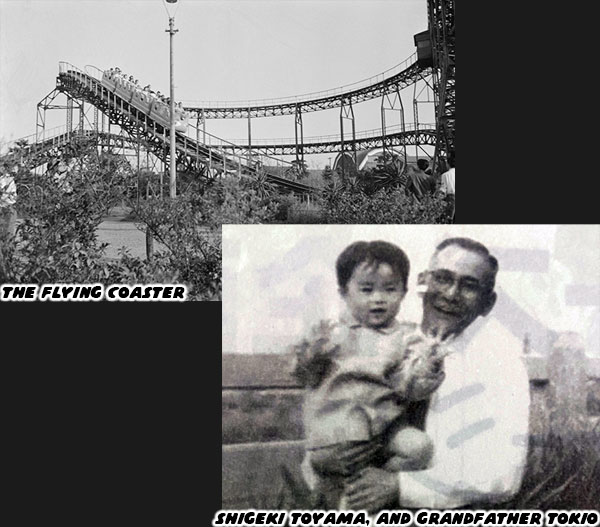
Wonder Eggs may have been a strange English word combination, but it was easy to paraphrase in Japanese. The older park that Tokio and later Shigeki worked at was located at Setagaya, Tokyo. It had been in operation from 1922 to 1985. Wonder Eggs was built in a corner of the property in 1992. Both parks were beloved by the community. Locals gave Futako-tamagawa the nickname “Futako” or “Nikotama,” the latter coming from an alternate reading of the first three kanji characters in the name. Tamago meant egg in Japanese. The nickname was probably a play on the expression “nico-nico manma” which referred to a relaxed and carefree attitude, often associated with taking things as they came without worry or stress. It reflected a laid-back approach to life and was used to describe someone who was easygoing or content with the present moment. Wonder Eggs was certainly a carefree place filled with magic. Shigeki Toyama created the template for the rides that would be built there. The goal was to provide play experiences for people of all ages. In the next blog we will look at their unique spin on some classics. Were there any defunct parks that you visited? Please tell me about it in the comments section. As always if you would like to sponsor me
please visit my Patreon page and consider donating each month, even as little as $1 would help make better blogs and even podcasts!
Wonder Eggs, and Egg Empire research collected from: Wonder Eggs Guide Map, Namco Graffiti magazine, the book “All About Namco II", NOURS magazine, The Namco Museum, Namco Wiki, Ge-Yume Area 51 Shigeki Toyama Collection, mcSister magazine, first person attraction details from Yoshiki. Event details from Hole in the Socks
















No comments:
Post a Comment